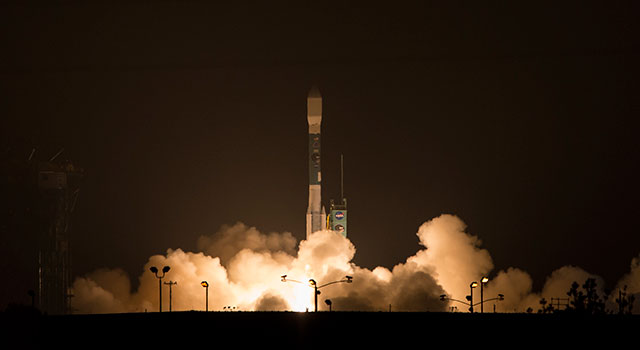Over the weekend, NASA launched SMAP, Soil Moisture Active Passive satellite, strapped to an unmanned United Alliance Delta II Rocket. Whereas many of NASA’s recent launches have had ISS or deep space trajectories, SMAP will be turning its gaze on earth — more specifically, the soil beneath our feet.
SMAP is one of NASA’s Earth-focused observation satellites that will measure soil moisture around the world and also monitor drought.
SMAP’s specific three-year mission will look at the top two inches of soil, day and night, and create the most accurate soil moisture maps ever obtained from space, according to NASA. Not only will the satellite provide vital information for scientists to monitor drought, SMAP will also provide potentially life-saving information for more accurate weather forecasting, flooding, and early famine detection. It will additionally give scientists a greater understanding of the Earth’s carbon dioxide cycle, which has a huge affect on global warming.

SMAP looking straight up sci-fi
SMAP is the fifth NASA instrument launched in the last 11 months geared toward analysing our planet. Where as the other four projects will be trying to unlock mysteries behind Earth’s atmosphere, SMAP will be strictly focused on soil. Using a rotating antenna that measure 20 feet (!) in diameter, SMAP will create global precipitation maps every three days, providing us with a vision of our planet that we’ve never seen before. [NASA]
